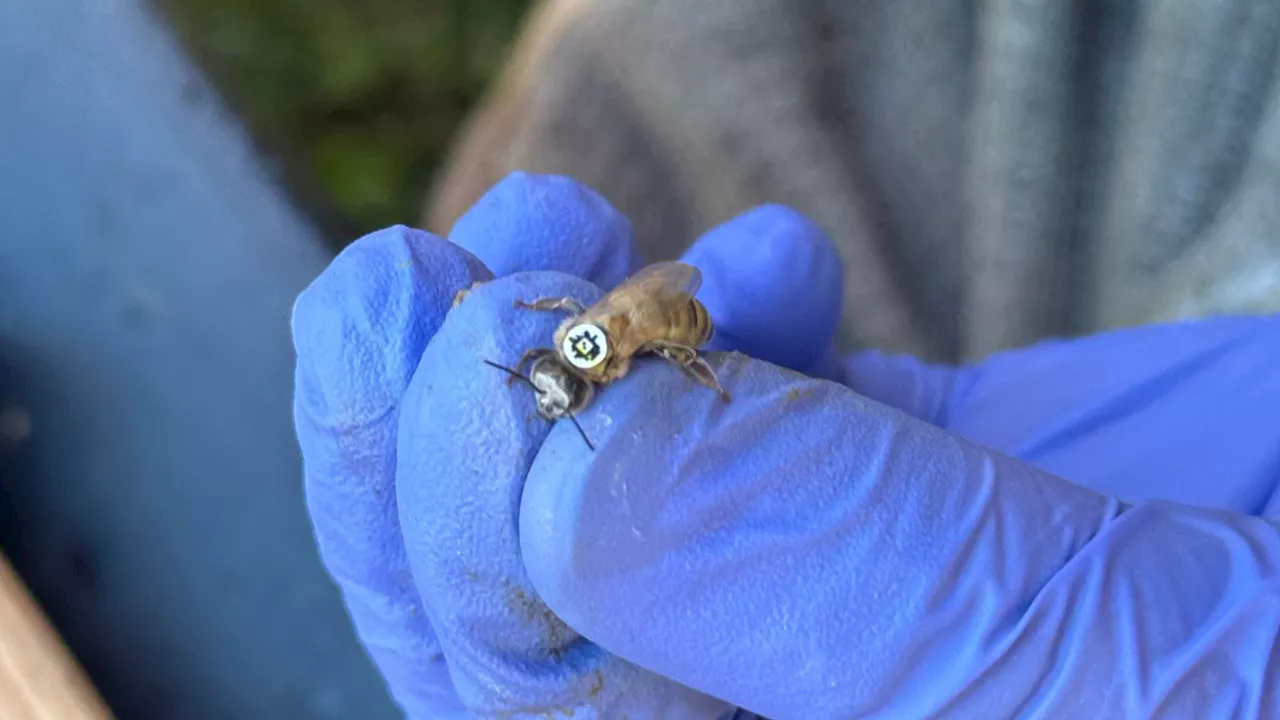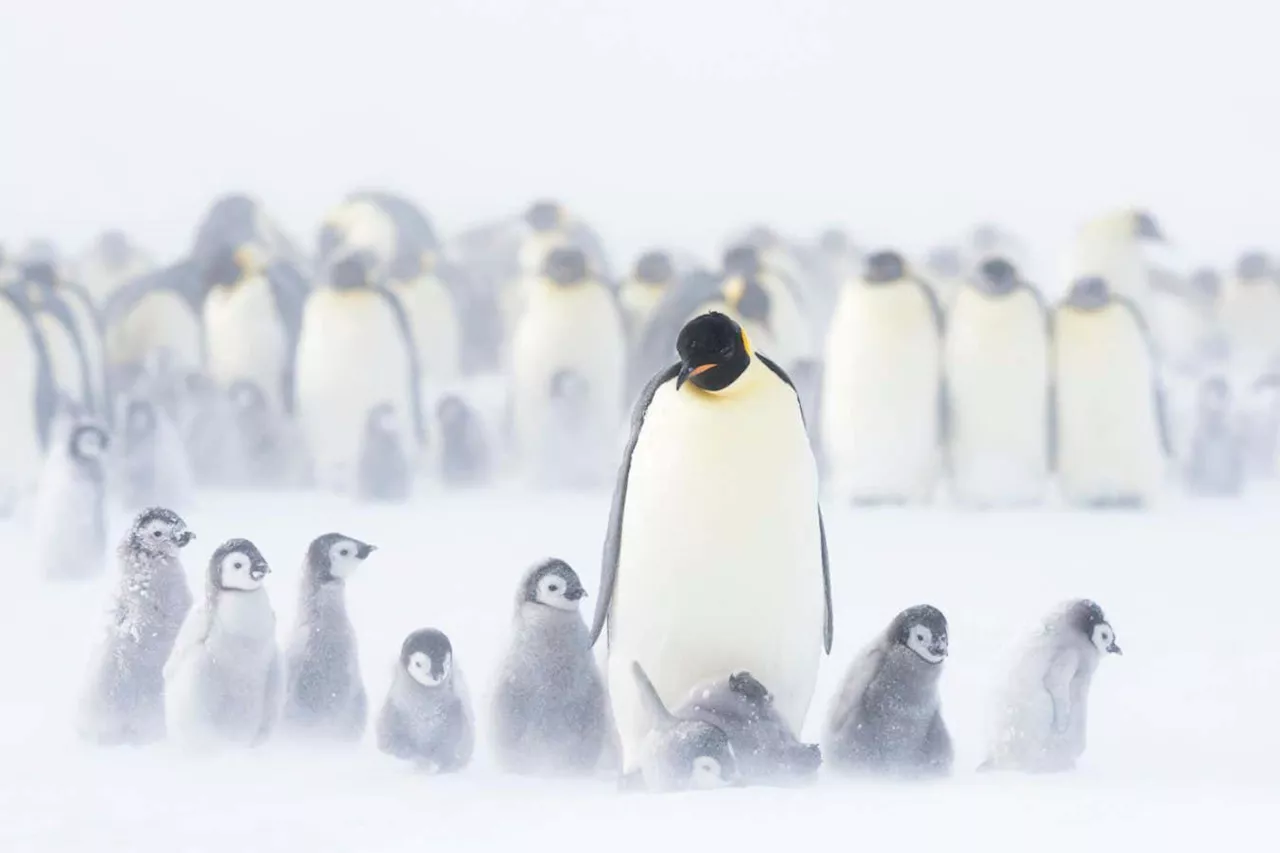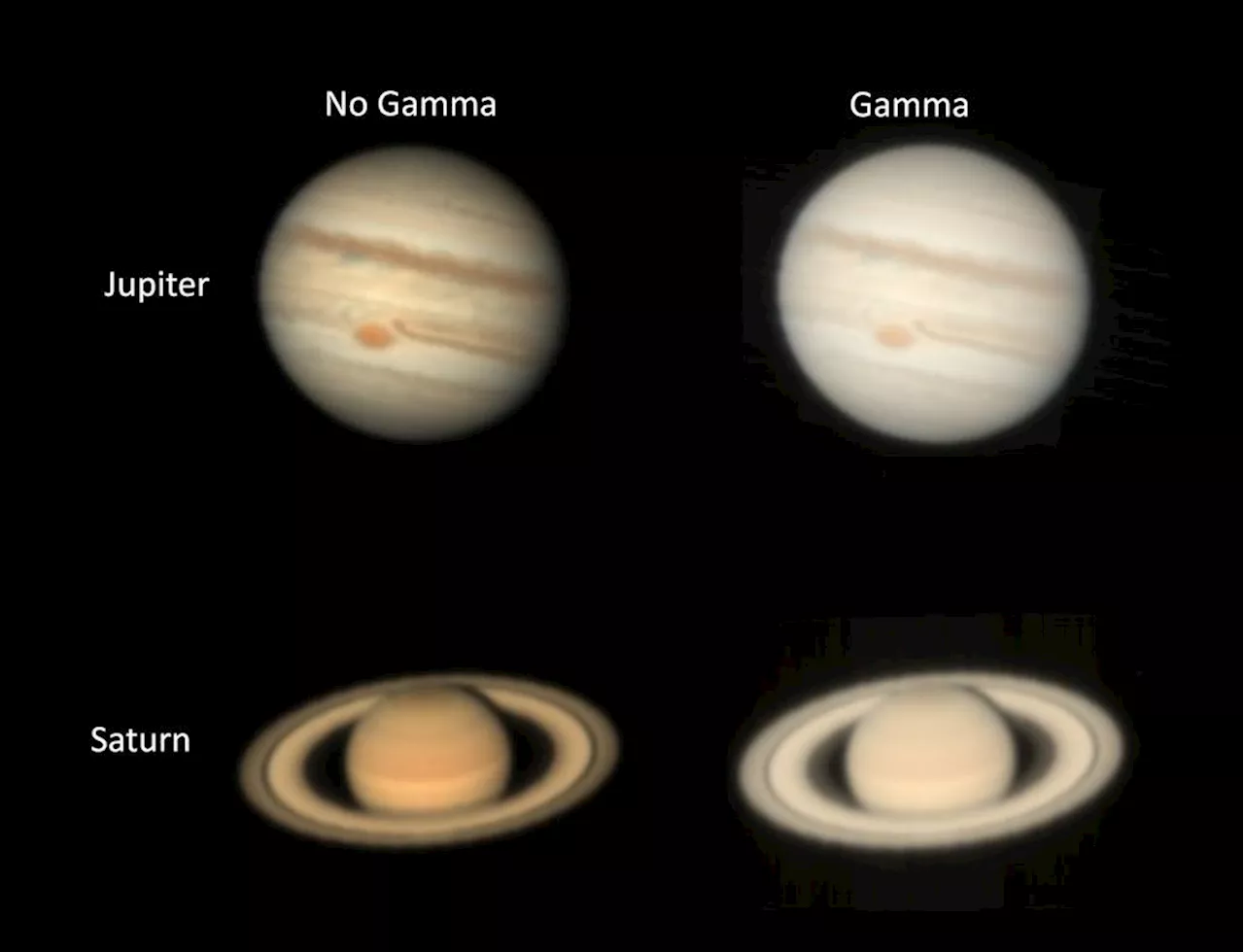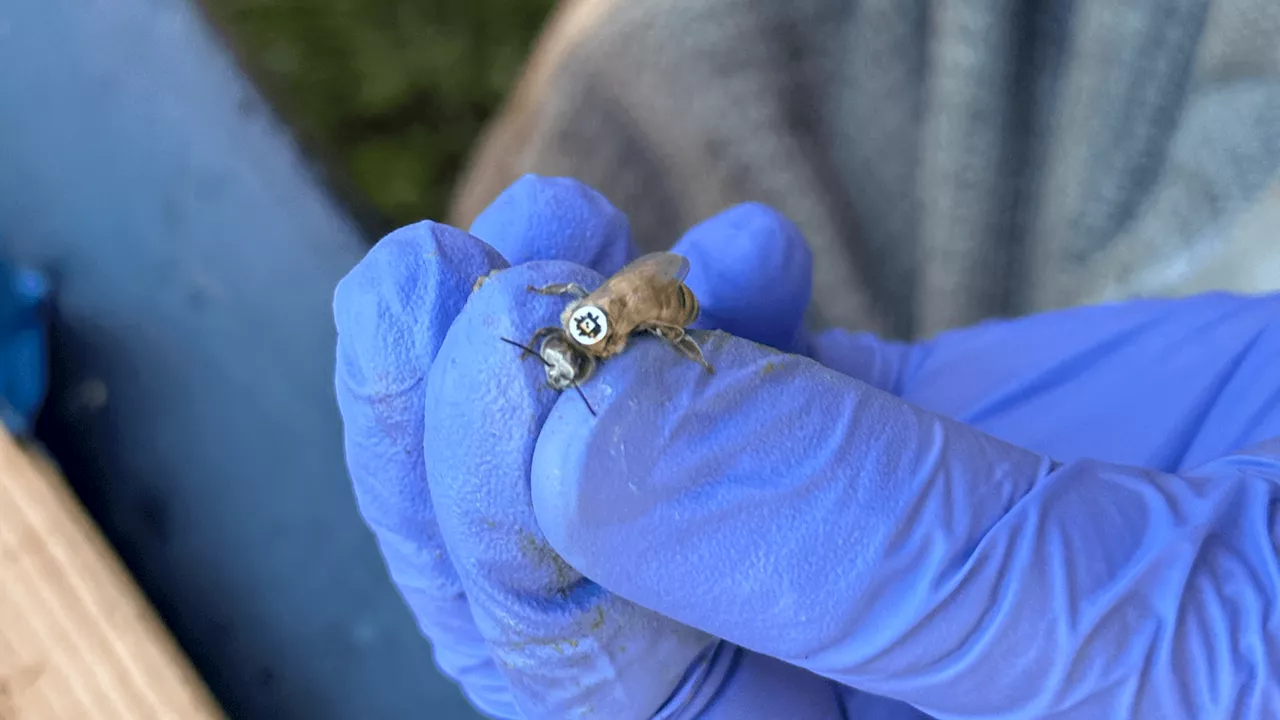Entomologists have developed a groundbreaking system using QR codes to track honey bee movements, providing valuable insights into their foraging habits and lifecycles. The study, published in HardwareX, challenges previous assumptions about bee travel distances and reveals that they live longer than previously thought.
Entomologists are gluing tiny QR codes on honey bees to better track the pollinators’ travel habits and life cycles. In doing so, they hope to gain a more complete and accurate understanding of the environmentally crucial creatures, and what is needed to keep hives healthy and thriving. And now that their findings and methods are available in the open-source journal, HardwareX, the team hopes other conservationists can soon start on their own QR code-enabled insect observations.
Back in 2010, the US Department of Agriculture proposed new requirements for designating bee products like honey as “organic.” In order to meet the regulatory benchmark, food and other items must be free of chemical treatments, herbicides, and pesticides. Not only that, but the environments around the source of these products must be similarly clean, as well. Honey bees are technically capable of flying as far as 10 km (6.1 mi), which factored heavily into the logistical needs for organic certification. While the USDA proposal ultimately failed, some researchers believed the 10 km zone may be an overestimation. But trying to get a better read on honey bee travel habits isn’t easy—often, it involves studying their famous “waggle dance.” The term refers to a bee’s complex movements to physically communicate with their hivemates, often about potential food source locations. “The waggle dance is the best source of information that we have about bee foraging, but that’s based on human observations, with maybe an hour of observations made once a day over two weeks,” explained Margarita López-Uribe, one of the study’s co-authors and a Penn State associate professor of entomology, in a statement. “In field biology, we usually just look at things with our eyes, but the number of observations we can make as humans will never scale up to what a machine can do.” With that in mind, López-Uribe’s team collaborated with Penn State electrical engineers to design a new, automated system that could record far more data over longer periods of time. “The goal to understand if that 10-kilometer estimation is biologically accurate,” said López-Uribe. “Can we determine exactly how far honey bees travel from their hives?” Researchers ultimately settled on a custom scanner system placed above apiary hives using low-cost, off-the-shelf components such as Raspberry Pi computers and cameras. They then used a natural shellac glue to attach paper QR code slips to each bee’s back. Like scanning an ID card when entering a building, the system automatically detected and logged each bee’s QR code as they flew to and from their home. In total, each setup cost approximately $1,500 per apiary. The team visited six apiaries every two weeks through the spring and summer, tagging around 600 foraging bees each time. By the end of their study, researchers had tagged more than 32,000 bees. To ensure both the safety of the bees—and themselves—the team focused on soft-bodied, younger bees that hadn’t yet begun to sting. The scanner system then logged each time a bee left and returned to the hive, along with the time, date, and outside temperature. The results both confirmed some of the researchers’ theories, as well as surprised them. As they originally believed, most bee journeys outside their hive only lasted a few minutes. But for around 34 percent of pollinators, those flights can turn into two-hour trips. While some of that number may be attributed to bees that never returned home, or even re-entered a hive upside down, it still indicated that foraging distances were often dictated by flower availability and location. What the scientists didn’t anticipate, however, was the implications their data had on honey bee lifespans. “We also found that bees are foraging for a lot longer over their lifetimes than initially thought,” said Robyn Underwood, a Penn State apiculture educator and study co-author. Although honey bees are generally believed to live only around 28 days, Underwood said they saw “bees foraging for six weeks, and they don’t start foraging until they are already about two weeks old, so they live a lot longer than we thought.” López-Uribe, Underwood, and their colleagues hope that their system will help further analysis, such as matching bee flight times to waggle dance movements in order to decode their messages. They also plan to host workshops to teach others how to build their own scanner setups. “This technology is opening up opportunities for biologists to study systems in ways that weren’t previously possible, especially in relation to organic beekeeping,” said López-Uribe
HONEY BEES QR CODES FORAGING HABITS LIFECYCLE ORGANIC BEEKEEPING CONSERVATION TECHNOLOGY ENTOMOLOGY
United States Latest News, United States Headlines
Similar News:You can also read news stories similar to this one that we have collected from other news sources.
 Honey Bees Equipped with QR Codes Reveal Secrets of Foraging BehaviorResearchers at Penn State have attached tiny QR codes to honey bees to track their foraging patterns. This innovative technology allows scientists to observe bee behavior in unprecedented detail, leading to new insights into their foraging habits, communication, and the impact of environmental factors on their activities.
Honey Bees Equipped with QR Codes Reveal Secrets of Foraging BehaviorResearchers at Penn State have attached tiny QR codes to honey bees to track their foraging patterns. This innovative technology allows scientists to observe bee behavior in unprecedented detail, leading to new insights into their foraging habits, communication, and the impact of environmental factors on their activities.
Read more »
 Celebrity Couples Reveal Bathroom SecretsNicole Kidman and Keith Urban share their love for singing in the shower and their double-headed shower setup. Meghan Trainor and Daryl Sabara discuss their unusual bathroom feature, two toilets side-by-side.
Celebrity Couples Reveal Bathroom SecretsNicole Kidman and Keith Urban share their love for singing in the shower and their double-headed shower setup. Meghan Trainor and Daryl Sabara discuss their unusual bathroom feature, two toilets side-by-side.
Read more »
 Bartenders Reveal Secrets for Crafting Delicious MocktailsThis article explores the art of making non-alcoholic cocktails (mocktails) that are just as flavorful and satisfying as their alcoholic counterparts. It shares tips from expert bartenders on how to balance flavors, prevent dilution, and create interesting textures without using alcohol.
Bartenders Reveal Secrets for Crafting Delicious MocktailsThis article explores the art of making non-alcoholic cocktails (mocktails) that are just as flavorful and satisfying as their alcoholic counterparts. It shares tips from expert bartenders on how to balance flavors, prevent dilution, and create interesting textures without using alcohol.
Read more »
 New Technologies Reveal Secrets of Emperor PenguinsRecent advancements in technology are shedding light on the lives of emperor penguins, a species that has long remained shrouded in mystery. Researchers are using satellites and AI-powered robots to study these birds in their natural habitat, uncovering fascinating details about their genetics, behavior, and adaptability.
New Technologies Reveal Secrets of Emperor PenguinsRecent advancements in technology are shedding light on the lives of emperor penguins, a species that has long remained shrouded in mystery. Researchers are using satellites and AI-powered robots to study these birds in their natural habitat, uncovering fascinating details about their genetics, behavior, and adaptability.
Read more »
 Essential Ingredients: Chefs Reveal Their Culinary SecretsDiscover the unexpected ingredients that professional chefs swear by. From tropical fruits to subtle spices, these culinary staples elevate everyday dishes.
Essential Ingredients: Chefs Reveal Their Culinary SecretsDiscover the unexpected ingredients that professional chefs swear by. From tropical fruits to subtle spices, these culinary staples elevate everyday dishes.
Read more »
 Amateur Astronomer's Backyard Observations Reveal Jupiter's Cloud SecretsAn amateur astronomer's innovative approach using a small telescope has led to groundbreaking discoveries about the composition of Jupiter's clouds. Dr. Steven Hill's observations, along with those from professional researchers using the Very Large Telescope, challenge the long-held belief that Jupiter's clouds are primarily made of ammonia ice.
Amateur Astronomer's Backyard Observations Reveal Jupiter's Cloud SecretsAn amateur astronomer's innovative approach using a small telescope has led to groundbreaking discoveries about the composition of Jupiter's clouds. Dr. Steven Hill's observations, along with those from professional researchers using the Very Large Telescope, challenge the long-held belief that Jupiter's clouds are primarily made of ammonia ice.
Read more »
